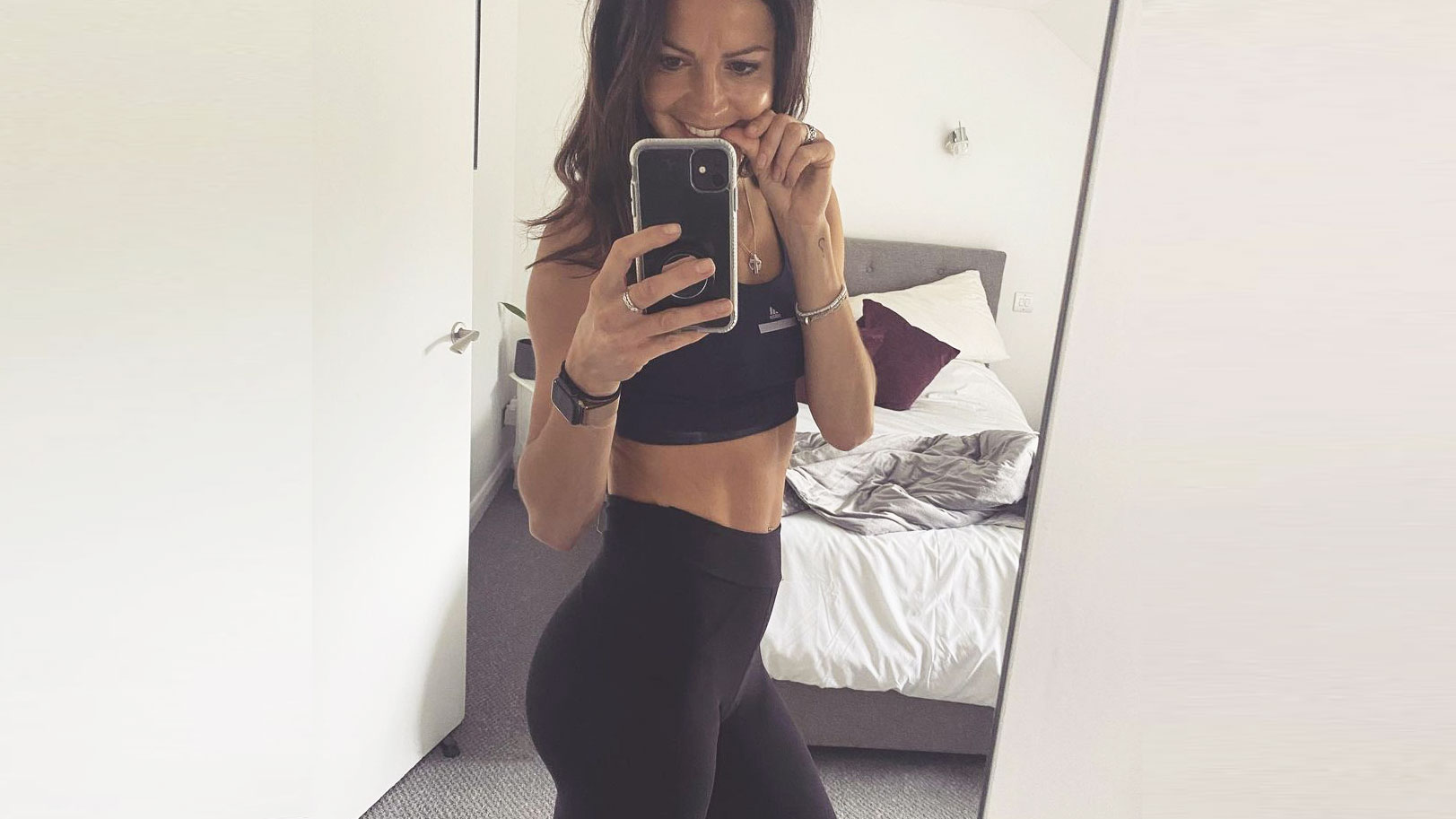'I did 500 squats a day for two weeks - THIS is what happened'
What went down when our writer set herself the challenge of doing 500 bodyweight squats every day for 14 days?


Ah, the humble squat; a compound move that works the lower body, hitting those quads, glutes, hamstrings and calves. But what happens when you do 500 bodyweight squats a day?
It's no secret that I’m a big fan of a squat. Such a big fan, it turns out, that I woke up one morning during lockdown and pledged to do 500 bodyweight squats a day for two weeks. It was something to do, if nothing else. And so, my squats challenge began (click the link for a 30-day plan you can try yourself).
The rules I set were simple. My 500 daily squats could be broken up however I wanted (I intended to do them in chunks of 50 or 100) and each squat was to be done properly with good form. So, thighs parallel to the ground, bum back, back straight, pushing through my heels to rise back up to standing (check out this guide on how to do a squat if you need any pointers).
So what happened when I did 500 squats a day for fourteen days straight? Did my bottom magically grow? Was I sore? Here's my verdict...
My butt was perky
As a personal trainer, I usually say that to grow your glutes (AKA your butt) then you need to lift weights. Over time, you should increase that weight and/or the number of repetitions.
It's called progressive overload, something a study in the European Journal of Applied Physiology found was effective for increasing strength and muscle growth in both men and women.
However, in a time when gyms are closed and most of us have very limited equipment at home, 500 bodyweight squats a day did actually seem to do the trick. It was like a 10-minute glute workout. Every. Single. Day.
Start your week with achievable workout ideas, health tips and wellbeing advice in your inbox.
Naturally, every day after my epic squat session I did that sly thing we all do after a workout... I walked past my full-length mirrors and checked myself out.
I was impressed, I won’t lie. My glutes were constantly fired up, burning and looking incredibly perky.
I had DOMS for two weeks
Delayed Onset Muscle Soreness (DOMS) - that muscle pain typically experienced 24 to 72 hours after a workout - was a problem throughout.
My mini squats challenge was basically a two-week DOMS endurance test. I’d wake up and feel like flames had attacked my bottom. Of course, there was no rest here; it was back to my 500 squats, pushing through the hellish burn in my butt.
So how did I attempt some form of DOMS recovery? Heat patches helped, as did Epsom salt baths (the magnesium content is absorbed by the body, which helps to reduce inflammation).
Stretching and releasing the muscles is also a useful way to combat DOMS, so I reached for my best foam roller and got busy rolling.
My lower back pain kicked in
I’m used to doing around 50 weighted squats max in any given gym session. So, although these were bodyweight squats, I was still doing 10 times the usual amount.
The result? After one week my lower back was twinging and although I didn’t give it much thought, I was grateful for the tube of Deep Heat in my first aid box.
Those twinges were a warning sign, so from thereon-in I made doubly sure I focused on my form - a surefire way to avoid back pain when squatting.
The key thing is to really focus on your legs and glutes taking the weight. Push through the heels as you rise from the squat, keeping them firmly on the ground. At the same time, keep the chest upright as you squat and avoid letting your chest cave in. This can be sorted by keeping your gaze upright; avoid looking down!
A post shared by - Lucy E Gornall - (@lucyelizabethgornall)
A photo posted by on
Multitasking took on new heights
To do 500 bodyweight squats a day does take quite a bit of time (proper squats, at least - not these half squats where your thighs are barely parallel to the ground).
So it got to a point where at any feasible opportunity, I would squat. Drying my hair? Squatting. Kettle boiling? Perfect time to get some squats in. Lunch in the microwave? That’s 50 bodyweight squats right there.
I was stood up one Tuesday afternoon checking emails on my phone, and my brain instinctively just went into squat mode - 10 squats and one email later, I marveled at my own multi-tasking skills.
I settled the glutes vs quads debate (in my own head, at least)
There’s a lot of debate in the fitness world as to the exact muscles that squats work most. On one side, people say that it’s the quads that reap the muscle-boosting benefits of a squat, whilst others say it’s all about that ass.
To understand the debate, you need to understand the the muscles that are engaged during a squat. At the bottom of the move, your quads (down the front of your thighs) will be working the hardest. Your core muscles are also activated at this point. Then as you rise, pushing up through your heels, your glutes and inner thigh muscles activate.
Myself? I say yeah, my quads were tired - but my glutes got all the action here. Keeping heels glued to the ground throughout the squat movement, and really focusing on pushing up through my heels, meant each bum cheek felt it.
Lucy is a freelance journalist specializing in health, fitness and lifestyle. She was previously the Health and Fitness Editor across various women's magazines, including Woman&Home, Woman and Woman’s Own as well as Editor of Feel Good You. She has also previously written for titles including Now, Look, Cosmopolitan, GQ, Red and The Sun.
She lives and breathes all things fitness; working out every morning with a mix of running, weights, boxing and long walks. Lucy is a Level 3 personal trainer and teaches classes at various London studios. Plus, she's pre- and post-natal trained and helps new mums get back into fitness after the birth of their baby. Lucy claims that good sleep, plenty of food and a healthy gut (seriously, it's an obsession) are the key to maintaining energy and exercising efficiently. Saying this, she's partial to many classes of champagne and tequila on the rocks whilst out with her friends.
